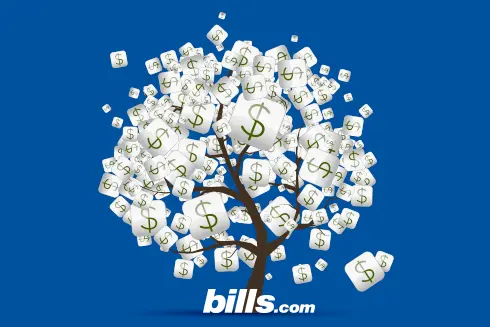How to Get Delinquent Accounts Off Credit Reports

Get rid of your debt faster with debt relief
Choose your debt amount
Or speak to a debt consultant 844-731-0836
- Understand that accurate information can't be removed from your credit report.
- Review the procedures for disputing inaccurate information from your credit report.
- Take the right steps to improve your credit.
- Start your FREE debt assessment
What is the fastest way to get a report of collection and late payments off a credit report?
What is the fastest way to get a report of collection and late payments off a credit report?
There is no reliable way to remove accurate credit information from a credit report. Despite the claims of many organizations offering "credit repair," derogatory items that accurately represent your payment history will stay on your credit report for 7 years. Why? Let us start by looking at the rules for credit reports.
Federal Credit Report Rules
Federal law (US Code Title 15, §1681c) controls the behavior of credit reporting agencies (CRAs). The specific law is called the Fair Credit Reporting Act (FCRA). Under FCRA §605 (a) and (b), an account in collection will appear on a consumer’s credit report for up to 7½ years.
To determine when an account will be removed by the CRAs (TransUnion, Equifax, and Experian and others), add 7 years to the date of first delinquency. The date of first delinquency is shown in credit reports. Subsequent activity, such as resolving the debt or one debt collector selling the debt to another collector, is irrelevant to the 7-year rule.
Some debts have a reporting period longer than 7 years, including:
- Tax liens: 10 years if unpaid, or 7 years from the payment date
- Bankruptcy: 10 years from the date of filing (15 U.S.C. §1681c)
- Perkins student loans: Until paid in full (20 U.S.C. §1087cc(c)(3))
- Direct and FFEL loans: 7 years from default or rehabilitation date (20 U.S.C. §1080a(f)(1) and 20 U.S.C. §1087e(a)(1))
- Judgments: 7 years or the debtor’s state statute of limitations on judgments, whichever is longer
The FCRA 7-year rule is separate from state statutes of limitations for debt issues, which govern how long you are legally responsibly to pay the debt. You can view the statute of limitations for debt for your states, as well as the lifespan of a judgment in your state, at the Bills.com Statute of Limitations Laws by State page.
The start of the 7-year period begins at the date of first delinquency, or if no payments are made, when the first payment was due. Review your credit report carefully to make certain the dates of first delinquency are reported correctly. Unscrupulous collection agents reset the date of first delinquency to stretch out how long a derogatory account appears on consumer’s credit report. This is illegal under the FCRA.
Just because a debt does not appear on a credit report does not mean the statute of limitations for the debt has passed. The opposite is also true: The passing of a state statute of limitations on a debt does not mean the debt may not appear on a credit report. The federal FCRA and state statutes of limitations are separate and independent of each other.
Whether a debt appears on a credit report does not establish legal liability for the debt. The opposite is also true: You may have legal liability for a debt not reported to the credit reporting agencies. Credit reports are not legal records of every debt a person owes.
Quick Tip
Get a no-cost, no obligation analysis of your debt options from a pre-screened debt relief provider.
clearing items from your credit report
if you have an account on your credit profile which is reporting as delinquent or in collections, you may not be able to remove the account from your credit report, but you should at least be able to mitigate the negative impact of the derogatory accounts on your credit score.
first, you may want to pay off any delinquent accounts which are appearing on your credit report. you will likely have difficulty clearing up your credit rating if you leave old collection accounts unpaid and unresolved. you do not necessarily need to pay the full balance of the debt; many creditors will accept a settlement of significantly less than the full balance owed on delinquent accounts in order to resolve the debt.
if you contact your creditors, or the collection agencies representing them, you may be able to negotiate settlements for 50% or less of the current balance owed. you may also wish to contact a professional debt negotiation firm for assistance in resolving your delinquent accounts; for more information on the options available to you in resolving these old debts.
i encourage you to visit the bills.com debt help page. also, if you enter your contact information in the bills.com savings center, we can put you in contact with a pre-screened debt resolution firm which may be able to assist you in paying off your delinquent accounts.
second, if you have any questionable items on your credit report which you think are reporting inaccurately, disputing the items is the first step in having them removed from your report.
i encourage consumers to carefully review their credit reports from each of the three major credit reporting bureaus (equifax, experian, and transunion) at least once per year, to make sure that all of the information appearing on the reports is accurate.
get a free copy of your credit report at annualcreditreport.com. credit reports are notoriously inaccurate. check your reports carefully, to make sure that your credit report is current and error-free. see the federal trade commission document ftc facts for consumers: how to dispute credit report errors for more information.
Tip
You don't need to hire a professional credit repair company to dispute inaccurate information. There is nothing they can do for you that you can't do for yourself, for free.
Since it is somewhat unlikely that you will be able to have accurate credit information removed from your credit reports, you may want to focus instead on how you can improve your credit rating going forward. The first step to rebuilding your credit rating is to establish new positive trade lines to counterbalance the negative impact of these old delinquent accounts.
As mentioned above, you also need to carefully review your credit reports on a regular basis to make sure that all information appearing on your reports is accurate and up to date.
You also need to avoid overusing credit, as having too much debt can negatively influence your credit score; a good rule to follow is to carry balances equaling no more than 25% of your total available credit lines.
To learn more about credit, credit reports, and credit scoring, I encourage you to visit the Bills.com Credit Help page.
I hope this information helps you Find. Learn & Save.
Best,
Bill

Get rid of your debt faster with debt relief
Take the first step towards a debt-free life with personalized debt reduction strategies.
Choose your debt amount
Or speak to a debt consultant 844-731-0836
Debt statistics
If you are struggling with debt, you are not alone. According to the NY Federal Reserve total household debt as of Quarter Q1 2024 was $17.69 trillion. Student loan debt was $1.60 trillion and credit card debt was $1.12 trillion.
According to data gathered by Urban.org from a sample of credit reports, about 26% of people in the US have some kind of debt in collections. The median debt in collections is $1,739. Student loans and auto loans are common types of debt. Of people holding student debt, approximately 8% had student loans in collections. The national Auto/Retail debt delinquency rate was 4%.
Collection and delinquency rates vary by state. For example, in Michigan, 17% have student loan debt. Of those holding student loan debt, 9% are in default. Auto/retail loan delinquency rate is 4%.
Avoiding collections isn’t always possible. A sudden loss of employment, death in the family, or sickness can lead to financial hardship. Fortunately, there are many ways to deal with debt including an aggressive payment plan, debt consolidation loan, or a negotiated settlement.
10 Comments
Derogatory information such as delinquent accounts are not removed when an old debt is paid. Negative information remains on a consumers credit report for 7 years (or longer) from the date of first delinquency. Paying an old delinquent debt will not cause the account to be removed from a consumer's credit report. Paying an old delinquent debt will change the status of the account only.
This raises the question, "If paying a delinquent account does not remove it from my credit reports, then what's the point in paying the debt?" • The collection agent or original creditor stops pestering you to pay the debt. • A settled delinquent debt looks better to potential lenders than an unpaid delinquent debt.
Years ago, it was easy to convince collection agents to agree to remove a derogatory account as a condition for paying a debt. Bills.com readers report collection agents are not agreeing to pay-for-delete deals today.
What to do? Focus on creating a positive credit history.